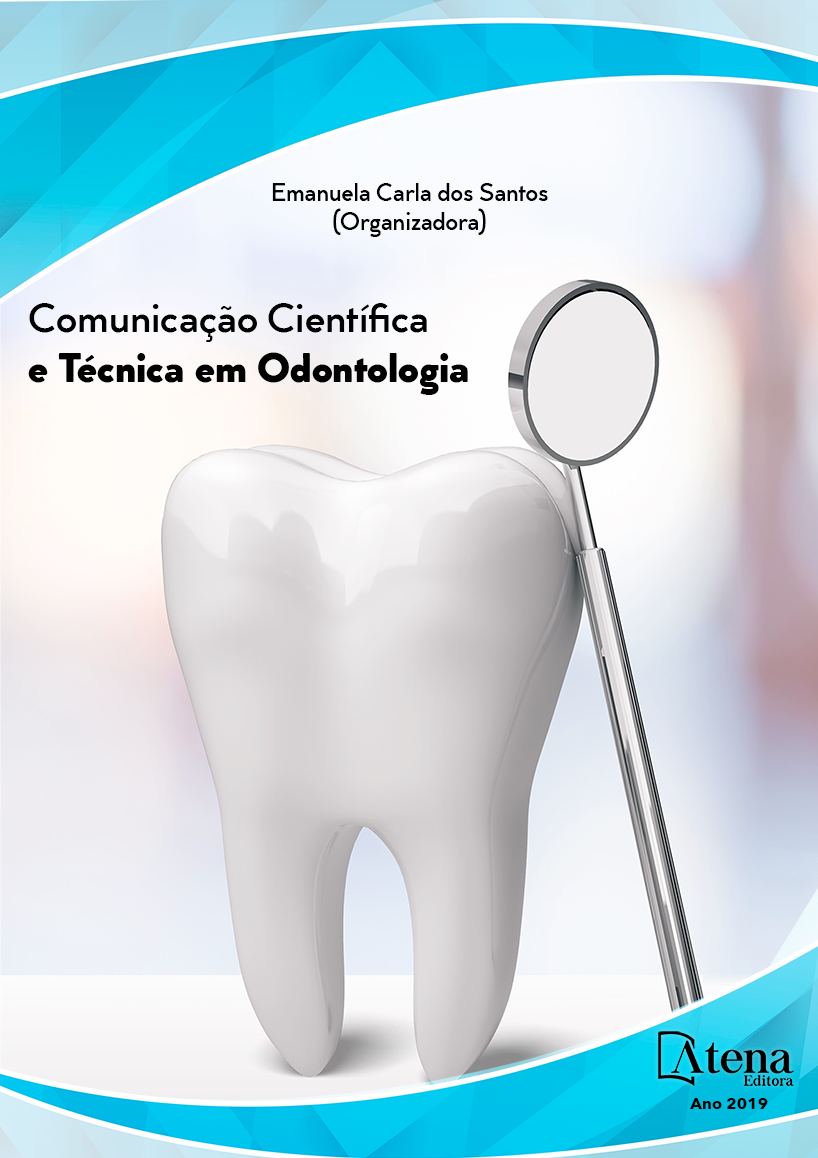
RELAÇÃO ENTRE PH SALIVAR E PRESENÇA DE NITRITO NA CAVIDADE BUCAL ATRAVÉS DA ANÁLISE BIOQUÍMICA DA SALIVA
O objetivo deste trabalho foi avaliar
através do teste bioquímico da saliva o pH da
cavidade oral e correlacionar com a presença
de nitrito e o desenvolvimento de câncer
bucal. Foram selecionados 80 voluntários
divididos em 3 grupos (G1: não fumantes; G2:
fumantes; G3: controle), que responderam a um
questionário sobre nível socioeconômico, dieta
e higienização bucal. Através da expectoração
por 5 minutos, foi analisada na primeira amostra
de saliva total não estimulada o pH e a presença
de nitrito através de fita reagente. A seguir, a
condição de higiene oral foi avaliada através do
Índice de Placa Visível (IPV) e os participantes
realizaram escovação supervisionada. Após
2 horas, colheu-se a saliva como no método
anterior. Não houve diferenças estatisticamente
significantes entre a primeira e segunda coleta
do pH nos grupos (p>0,05) e a média foi 6,5. Nos
casos de presença de nitrito o pH esteve mais
baixo. A presença do nitrito em ambas as coletas
não apresentou diferença significativa quando
comparados o G1 e G2. O G3 apresentou pH
próximo do neutro e um menor IPV e prevalência
de positivo a nitrito. A segunda coleta contribuiu
para a redução do nitrito. Sendo assim, o pH
interfere na presença de nitrito na saliva e
aliado às condições de higiene e tabagismo
são fatores facilitadores de desenvolvimento
de câncer bucal. Uma melhor higienização da
boca e dieta com baixo consumo de alimentos
ricos em nitrito influenciaram na redução dos
índices de nitrito na saliva.
RELAÇÃO ENTRE PH SALIVAR E PRESENÇA DE NITRITO NA CAVIDADE BUCAL ATRAVÉS DA ANÁLISE BIOQUÍMICA DA SALIVA
-
DOI: 10.22533/at.ed.29619010419
-
Palavras-chave: Saliva. Nitrito. Carcinogênese.
-
Keywords: Saliva. Nitrite. Carcinogenesis.
-
Abstract:
The objective of this study was to evaluate the pH of the oral cavity and
to correlate with the presence of nitrite and the development of oral cancer through the
salivary biochemical test. Eighty volunteers were divided into three groups (G1: nonsmokers,
G2: smokers, G3: control), who answered a questionnaire on socioeconomic
level, diet and oral hygiene. Through the sputum for 5 minutes, the pH and the presence
of nitrite through reagent tape were analyzed in the first sample of total non-stimulated
saliva. Next, the oral hygiene condition was evaluated through the Visible Plate Index
(VPI) and the participants underwent supervised brushing. After 2 hours, the saliva was
collected as in the previous method. There were no statistically significant differences
between the first and second pH collection in the groups (p> 0.05) and the mean was
6.5. In cases of presence of nitrite the pH was lower. The presence of nitrite in both
collections did not present a significant difference when compared to G1 and G2. The
G3 presented pH close to the neutral and a lower IPV and a prevalence of positive to
nitrite. The second collection contributed to the reduction of nitrite. Therefore, the pH
interferes with the presence of nitrite in the saliva and allied to the conditions of hygiene
and smoking are factors that facilitate the development of oral cancer. Better hygiene of
the mouth and diet with low consumption of foods rich in nitrite influenced the reduction
of nitrite indices in saliva.
-
Número de páginas: 15
- Mayara Ricardo Moraes
- Mariana de Lyra Vasconcelos
- Herculano Ramirez Floro Alonso
- Kelly de Moura Ferreira
- José de Amorim Lisboa Neto
- Camila Maria Beder Ribeiro Girish Panjwani
- Amanda Rafaela da Silva Amorim


